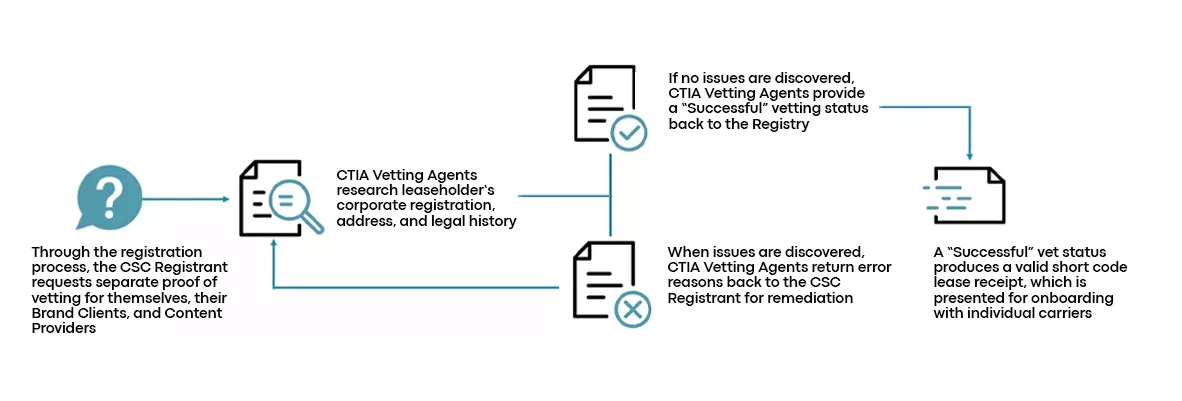Registry Vetting Process
At least once annually, CTIA’s Vetting Agents vet all short code leaseholders, their Brand Clients and associated Content Providers with the Registry Vetting process. During the vetting process, the company name, corporate registration, compliance history, and legal history are validated separately for each entity using the data fields entered into the registry application.


Almost all vet requests go through Registry Vetting without incident. In rare instances when our vetting agents uncover discrepancies, notification is provided to CSC Registrants through their short code portal access and via email.
Email Verification Process (Brand Client only)
- The Email listed in the Brand Client Point of Contact receives an email coming from sender: certify@aegismobile.com
- The Brand Client Point of Contact opens the email and visits the secure URL (via certify.myaegisapp.com domain) provided in the email. Within this secure location the Brand Client POC then enters their name and title, along with the PIN provided in the email
- Once completed, the PIN verification is recorded as part of the vetting record
Complete Registry Vetting results are available to CSC Registrants through their short code portal access at any time.
Submission Tips
- FEIN numbers are free and available from the IRS via Form SS-4
- In the Brand Client List, enter the FEIN and the legal name shown on the first line only of CP-575 (IRS EIN confirmation letter)
- Only one CP-575 letter is issued per FEIN by the IRS however, the IRS will issue multiple 147-C (EIN verification letter), often same day via fax
- IRS toll free number 1-800-829-4933













